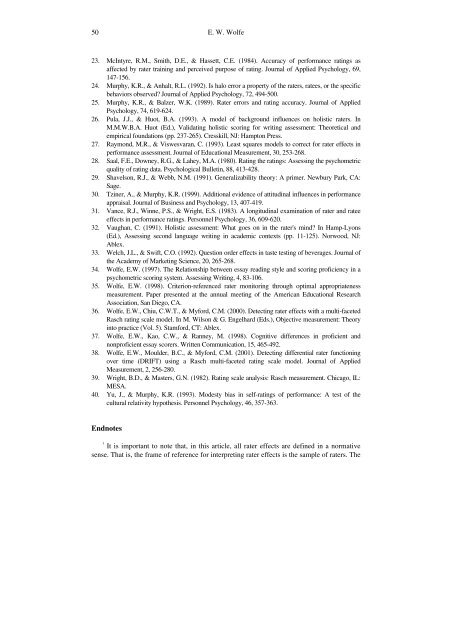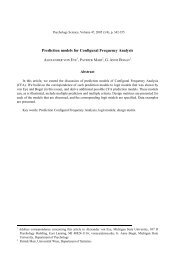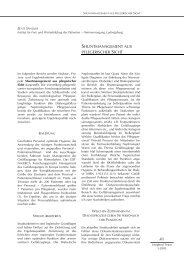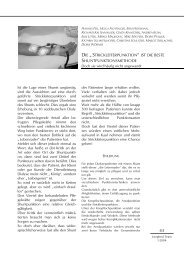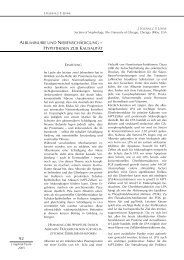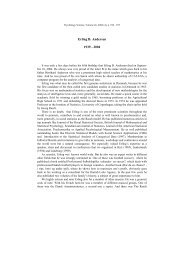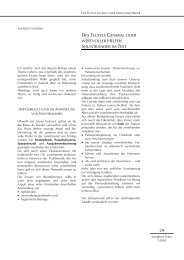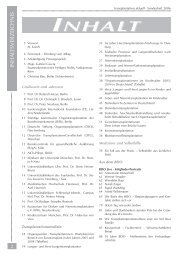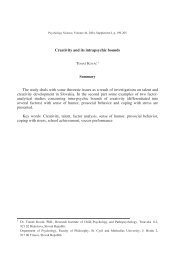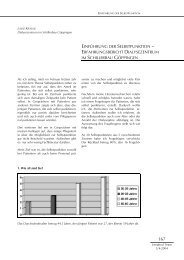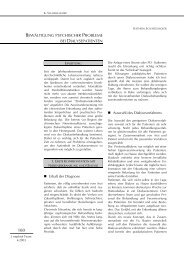Identifying rater effects using latent trait models Abstract
Identifying rater effects using latent trait models Abstract
Identifying rater effects using latent trait models Abstract
Create successful ePaper yourself
Turn your PDF publications into a flip-book with our unique Google optimized e-Paper software.
50<br />
E. W. Wolfe<br />
23. McIntyre, R.M., Smith, D.E., & Hassett, C.E. (1984). Accuracy of performance ratings as<br />
affected by <strong>rater</strong> training and perceived purpose of rating. Journal of Applied Psychology, 69,<br />
147-156.<br />
24. Murphy, K.R., & Anhalt, R.L. (1992). Is halo error a property of the <strong>rater</strong>s, ratees, or the specific<br />
behaviors observed? Journal of Applied Psychology, 72, 494-500.<br />
25. Murphy, K.R., & Balzer, W.K. (1989). Rater errors and rating accuracy. Journal of Applied<br />
Psychology, 74, 619-624.<br />
26. Pula, J.J., & Huot, B.A. (1993). A model of background influences on holistic <strong>rater</strong>s. In<br />
M.M.W.B.A. Huot (Ed.), Validating holistic scoring for writing assessment: Theoretical and<br />
empirical foundations (pp. 237-265). Cresskill, NJ: Hampton Press.<br />
27. Raymond, M.R., & Viswesvaran, C. (1993). Least squares <strong>models</strong> to correct for <strong>rater</strong> <strong>effects</strong> in<br />
performance assessment. Journal of Educational Measurement, 30, 253-268.<br />
28. Saal, F.E., Downey, R.G., & Lahey, M.A. (1980). Rating the ratings: Assessing the psychometric<br />
quality of rating data. Psychological Bulletin, 88, 413-428.<br />
29. Shavelson, R.J., & Webb, N.M. (1991). Generalizability theory: A primer. Newbury Park, CA:<br />
Sage.<br />
30. Tziner, A., & Murphy, K.R. (1999). Additional evidence of attitudinal influences in performance<br />
appraisal. Journal of Business and Psychology, 13, 407-419.<br />
31. Vance, R.J., Winne, P.S., & Wright, E.S. (1983). A longitudinal examination of <strong>rater</strong> and ratee<br />
<strong>effects</strong> in performance ratings. Personnel Psychology, 36, 609-620.<br />
32. Vaughan, C. (1991). Holistic assessment: What goes on in the <strong>rater</strong>'s mind? In Hamp-Lyons<br />
(Ed.), Assessing second language writing in academic contexts (pp. 11-125). Norwood, NJ:<br />
Ablex.<br />
33. Welch, J.L., & Swift, C.O. (1992). Question order <strong>effects</strong> in taste testing of beverages. Journal of<br />
the Academy of Marketing Science, 20, 265-268.<br />
34. Wolfe, E.W. (1997). The Relationship between essay reading style and scoring proficiency in a<br />
psychometric scoring system. Assessing Writing, 4, 83-106.<br />
35. Wolfe, E.W. (1998). Criterion-referenced <strong>rater</strong> monitoring through optimal appropriateness<br />
measurement. Paper presented at the annual meeting of the American Educational Research<br />
Association, San Diego, CA.<br />
36. Wolfe, E.W., Chiu, C.W.T., & Myford, C.M. (2000). Detecting <strong>rater</strong> <strong>effects</strong> with a multi-faceted<br />
Rasch rating scale model. In M. Wilson & G. Engelhard (Eds.), Objective measurement: Theory<br />
into practice (Vol. 5). Stamford, CT: Ablex.<br />
37. Wolfe, E.W., Kao, C.W., & Ranney, M. (1998). Cognitive differences in proficient and<br />
nonproficient essay scorers. Written Communication, 15, 465-492.<br />
38. Wolfe, E.W., Moulder, B.C., & Myford, C.M. (2001). Detecting differential <strong>rater</strong> functioning<br />
over time (DRIFT) <strong>using</strong> a Rasch multi-faceted rating scale model. Journal of Applied<br />
Measurement, 2, 256-280.<br />
39. Wright, B.D., & Masters, G.N. (1982). Rating scale analysis: Rasch measurement. Chicago, IL:<br />
MESA.<br />
40. Yu, J., & Murphy, K.R. (1993). Modesty bias in self-ratings of performance: A test of the<br />
cultural relativity hypothesis. Personnel Psychology, 46, 357-363.<br />
Endnotes<br />
1<br />
It is important to note that, in this article, all <strong>rater</strong> <strong>effects</strong> are defined in a normative<br />
sense. That is, the frame of reference for interpreting <strong>rater</strong> <strong>effects</strong> is the sample of <strong>rater</strong>s. The


